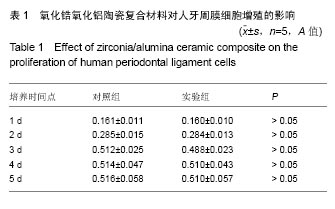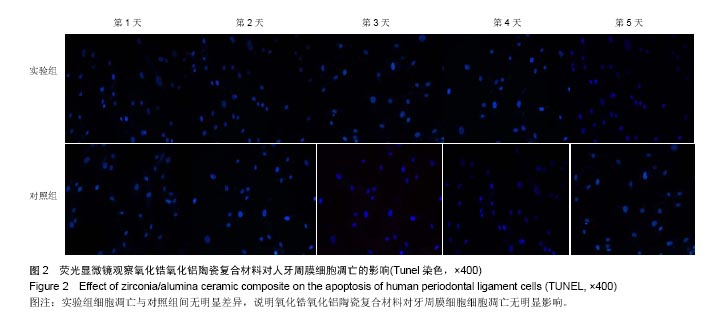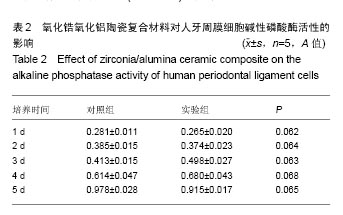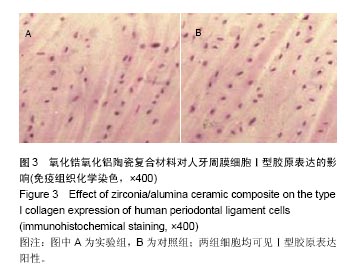| [1]Moshaverinia A,Xu X,Chen C,et al.Application of stemcells derived frOm the periodontal ligament orgingivaltissue sources for tendon tissue regeneration.Biomaterials. 2014; 35(9):2642-2650.[2]Yang Z,Jin F,Zhang X, et al.Tissue engineering ofcementum/periodontal—ligament complex using a novelthree—dimensional pellet cultivation system for humanperiodontal ligament stem cells.Tissue Eng Part CMethods.2009;15(4):571-581.[3]Ikeda H,Sumita Y,Ikeda M,et al.Engineering boneformation fr0m human dental pulp—and periodontal ligament-derived cells.Ann Biomed Eng.2011;39(11):26-34.[4]王燕.口腔正畸修复治疗牙列缺损的临床探讨[J].中外医疗,2015, 34(27):32-33.[5]黄艳.口腔正畸治疗牙周病所致前牙移位观察[J].现代临床医学, 2017,43(2):135-136.[6]赵娜.牙周病致前牙移位患者经口腔正畸治疗效果[J].大家健康旬刊,2017,11(2):93.[7]袁泉.可注射性骨修复材料不饱和聚磷酸酯/β-TCP的制备和降解行为研究[D].华中科技大学,2015.[8]董红宾,张琴,何惠宇.三种异种骨材料修复牙周骨缺损的比较[J].中国组织工程研究,2015,19(8):1170-1176.[9]杜振刚.不同类型、不同材料牙周夹板修复治疗牙周病60例临床分析[J].当代医学,2016,22(20):61-62.[10]朱丽雷,姚瑶.不同材料及类型牙周夹板修复治疗牙周病的系统评价[J].医学美学美容:中旬刊,2014,23(9):243.[11]刘娟,赵红宇,轩东英.人牙周膜细胞群多向分化潜能的实验研究[J].华西口腔医学杂志,2010,28(2):185-189[12]吴勇,吴织芬,王勤涛.骨形成蛋白-2和碱性成纤维细胞生长因子对牙周膜细胞碱性磷酸酶活性的联合效应[J].牙体牙髓牙周病学杂志, 2001,11(4):228-230.[13]李小彤,张丁,傅民魁.机械牵张力对人牙周膜细胞成骨样细胞功能的影响[J].中华口腔医学杂志,2002,37(2):135-138[14]张丁,李小彤,傅民魁.周期性牵张力对人牙周膜细胞中成骨样细胞表型碱性磷酸酶和骨钙素mRNA表达的影响[J].北京大学学报医学版,2001,33(2):118-121.[15]张丁,杨雁琪,李小彤.人牙周膜细胞骨保护因子和破骨细胞分化因子蛋白的表达及1α,25(OH)2维生素D3的调节[J].北京大学学报医学版,2004,36(6):646-649.[16]林景广,LinJing-guang.生物材料和细胞因子对人牙周膜细胞的影响[J].中国组织工程研究,2009,13(21):4153-4156.[17]王琳,冯海兰,梅芳.人牙周膜细胞在左旋聚乳酸/羟基磷灰石生物材料上的生长观察[J].解剖学报,2008,39(4):573-577.[18]赵宁,张现军,李伟.左旋聚乳酸羟基磷灰石生物材料与牙周膜细胞的生物相容性[J].中国组织工程研究,2016,20(12): 1732-1737.[19]吴晓楠.纳米羟基磷灰石复合电纺纤维膜诱导牙周膜细胞骨化分化的研究[D].南京大学,2015.[20]刘怡,房殿吉,李静远.小型猪牙周膜细胞体外培养及与三维支架材料的生物相容性研究[J].北京口腔医学,2006,14(1):20-22.[21]赵博,王永兰.复合胰岛素样生长因子1壳聚糖胶原支架与人牙周膜细胞的增殖[J].中国组织工程研究,2014,18(8):1231-1236[22]邓庶男,黄红燕,战德松.牙科氧化锆氧化铝陶瓷复合材料的生物相容性[J].中国组织工程研究,2016,20(3):370-376.[23]田晓利,薛崇勃,薛群虎.氧化铝-氧化锆陶瓷复合材料的断裂模式[C].全国高技术陶瓷学术年会,2014.[24]马利泰,李包顺.氧化锆氧化铝复合材料的显微结构[J].无机材料学报,1989,4(1):65-70.[25]王焕英,张萍,国占生.纳米氧化锆复合陶瓷粉体的制备及应用研究进展[J].人工晶体学报,2007,36(1):161-165.[26]Amlod LF,Baram P.In vitro culture of periodnoial ligament cells. J Dent Res.1972;51(4):953-959.[27]刘爱旗,夏璐.CCK-8法与MTT法检测兔成纤维细胞活性的比较[J].中国医学创新,2013,6(2):12-13.[28]28 Wang W,Li X,Meng FB,et al.Effects of the Long Non-Coding RNA HOST2 On the Proliferation, Migration, Invasion and Apoptosis of Human Osteosarcoma Cells.Cell Physiol Biochem.2017;43(1):320-330. [29]Li G,Chong T,Xiang X,et al.Downregulation of microRNA-15a suppresses the proliferation and invasion of renal cell carcinoma via direct targeting of eIF4E.Oncol Rep.2017; 38(4):1995-2002. [30]Xu LF,Luo JP,Li HJ,et al.Effect of Interfering the ADAM10 by Lentivirul Vector-Mediated shRNA on Multiple Myeloma MM.1S Cell Proliferation.Zhongguo Shi Yan Xue Ye Xue Za Zhi.2017;25(4):1074-1079. [31]Wang YQ,Fan CC,Chen BP,et al.Resistin-Like Molecule Beta (RELM-β) Regulates Proliferation of Human Diabetic Nephropathy Mesangial Cells via Mitogen-Activated Protein Kinases (MAPK) Signaling Pathway.Med Sci Monit. 2017;23: 3897-3903.[32]Niu C,Yuan K,Ma R,et al.Gold nanoparticles promote osteogenic differentiation of human periodontal ligament stem cells via the p38 MAPK signaling pathway.Mol Med Rep.2017; 16(4):4879-4886. [33]Zhai F,Song N,Ma J,et al.FGF18 inhibits MC3T3?E1 cell osteogenic differentiation via the ERK signaling pathway.Mol Med Rep.2017;16(4):4127-4132.[34]吴勇,吴织芬,王勤涛.骨形成蛋白-2和碱性成纤维细胞生长因子对牙周膜细胞碱性磷酸酶活性的联合效应[J].牙体牙髓牙周病学杂志,2001,11(4):228-230.[35]刘伟,王雷,陈守奎.黄芩苷联合柚皮苷对人牙周膜细胞活性的影响[J].河南中医,2017,42(1):172-174.[36]曹宇,王莉莉.血管内皮细胞生长因子与碱性成纤维细胞生长因子联合应用对鼠牙周膜成纤维细胞增殖与碱性磷酸酶活性的影响[J].中国组织工程研究,2017,21(4):580-585.[37]Mergenhagen SE,Martin GR,Rizzo AA.Calcification in vivo of implanted collagen.Biochim Biophys Acta.1960;43:563-565.[38]Nohutcu RM,McCauley LK,Koh AJ,et al.Expression of extracellular matrix proteins in human periodontal ligament cells during mineralization in vitro.J Periodontol. 1997; 68(4): 320-327. |
.jpg)





.jpg)